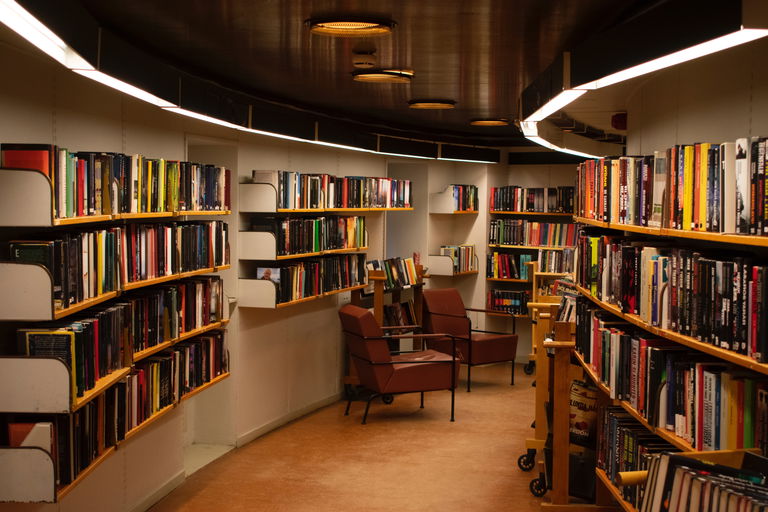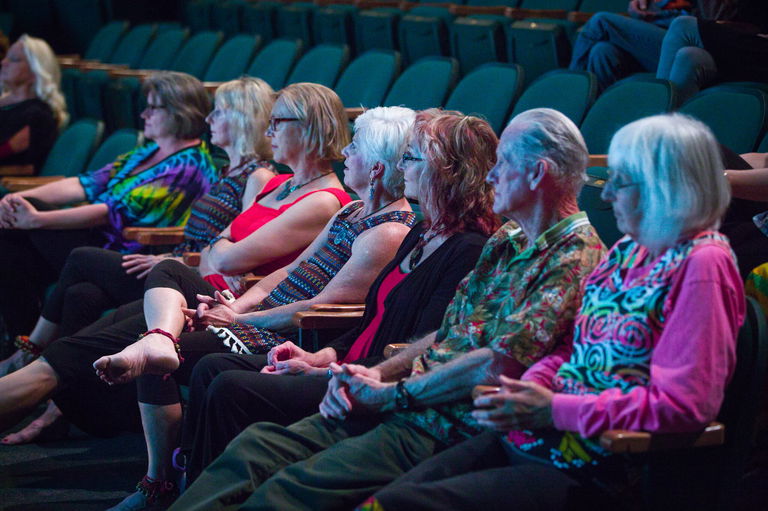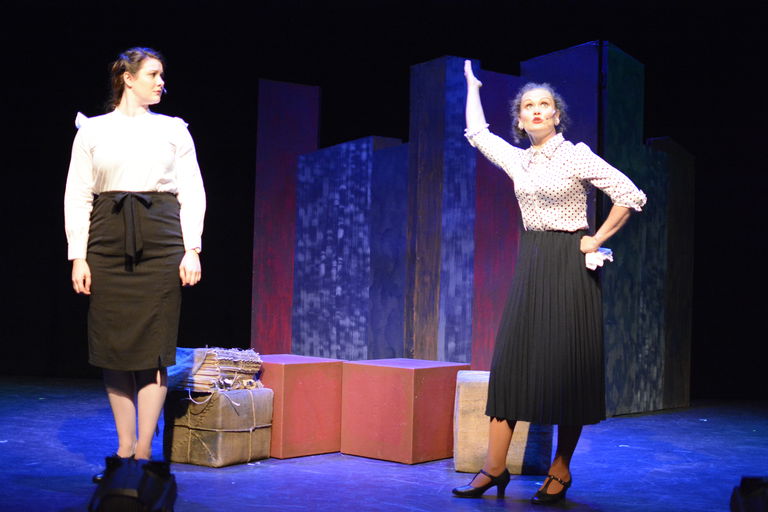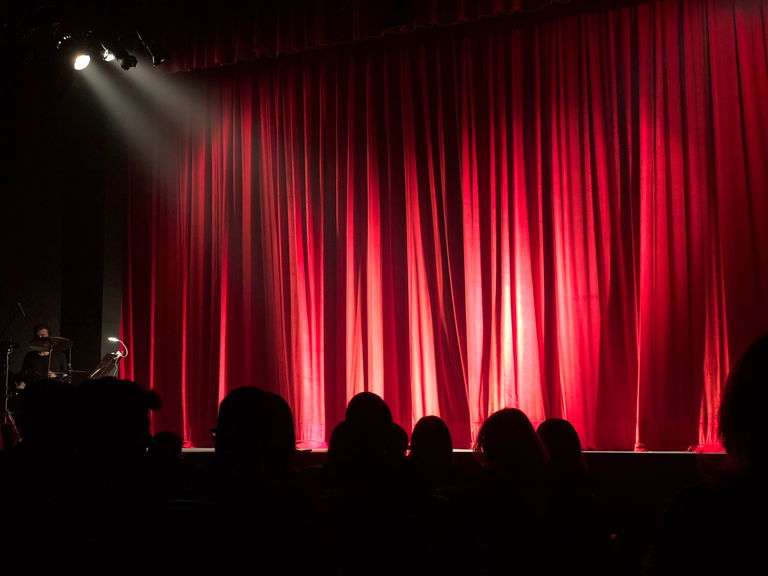
Mobilizing the Community: Local Artists in Partnership with the Toronto Public Library
Johanne Tremblay
Nov 1, 2013
published on: 01/11/2013

The Toronto Public Library, in partnership with the Neighbourhood Arts Network, and Culture Days Ontario have developed a compelling approach to community outreach that has helped libraries reach community members through collaboration with artists and local arts and cultural organizations.
The role of public libraries is evolving in today’s North American societies. Libraries are moving towards becoming places where people congregate, learn and live collectively, thereby becoming spaces of cultural and civic engagement. Libraries have been described as cultural living rooms or “third spaces,” second only to people’s homes and workplaces, as key locales for congregating, exchanging ideas, sharing news, and developing skills.
This case study looks at the development of unique relationships between artists and cultural institutions such as the Toronto Public Library, and explores how artists are playing a leading role in cultural engagement within this context.
The Changing Role of Public Libraries
Throughout the globe, public libraries welcome children, immigrants, entrepreneurs, and local citizens, so that they may discover, interact, and gain basic skills as they navigate an increasingly complex world. Adapting to technological, demographic and social changes, public libraries have become places of innovation and opportunity, and are now indispensable resources in today’s cityscapes.
As they maintain their traditional role of repositories of cultural heritage, home to many books, magazines, and other publications, public libraries have also put in place resources for members, offering training, workshops, online tools, and a variety of programs that include creative writing workshops, exhibitions, public conferences, and artistic performances. For example, sixteen Toronto Public Library branches have Library Settlement Partnerships that offer a unique and innovative Newcomer Information Service, including one-on-one settlement information and referral, group information sessions, and community outreach. The Toronto Public Library has been a part of this cultural shift and is developing innovative ways of collaborating with artists and other members of the community in order to not only facilitate people’s integration into their communities, but as a means of fostering civic participation and engagement by encouraging people to get more directly involved.

Artists From the Neighbourhood are Invited to Use Their Local Library
Through the program Culture Days @ the Library, the Toronto Public Library’s goals are to engage the public more directly in artistic activities and to connect artists with the community, while raising “the profile of the library as a whole in terms of being a centre or hub of cultural activity,” says Miriam Scribner, Senior Services Specialist, Programming & Events at the Toronto Public Library.
The Toronto Public Library’s partnership with Culture Days dates back to 2011. It evolved out of a specific challenge identified in the community, recalls Catherine McLeod, Acting Manager of Culture Days Ontario, namely:
What is the number one barrier to independent artists participating in Culture Days?“ The answer was: venues. The ensuing partnership was created in part to remedy this problem.
The Toronto Public Library viewed this challenge as an opportunity to develop partnerships that would strengthen its relationships and commitment to the city’s local cultural and artistic communities. One of their key partners in Culture Days @ the Library is The Neighbourhood Arts Network, a strategic initiative of the Toronto Arts Council, that helps artists and community organizations enrich Toronto’s urban landscape, transforming it into a more vibrant, beautiful, liveable city.
From Etobicoke to Scarborough, North York to downtown Toronto, during the Culture Days weekend, Toronto Public Library branches provide free venues for Toronto-based artists, small and medium-sized professional arts groups, as well as volunteer-run cultural organizations, collectives and associations, so that they can organize activities, workshops, exhibitions and performances for local residents. The Neighbourhood Arts Network disseminates information about this opportunity to Toronto’s independent artists and community focused arts organizations to make them aware and invite them to participate.
Through its participation in Culture Days, and more broadly with this innovative programming and approach to community outreach, the Toronto Public Library, in collaboration with its key partners, maintains a central position in life of the community. Since 2011, the program has helped more than 117 artists and arts groups share their work with more than 5,000 Torontonians in 70 library branches across the city.
Some of the impacts of Culture Days @ the Library include providing artists access to free spaces to show their work, as well as augmenting the number of people that interact with their work. Event organizers have commented that artists tend to stay in touch with their local branch, and are able to deliver programs and activities at other times during the year. Finally, this partnership enables the Toronto Public Library to create and co-host fun and engaging activities for the members of their local library branches and the community at large.

The Role of the Independent Artist as Mobilizer
Shannon Thunderbird, Coast Tsimshian Elder, artist, Founder and Artistic Director of Teya Peya Productions has performed three times as part of Culture Days @ the Library: at Black Creek in 2011 and at Kennedy/Eglington in 2012. This year, she brought her workshop to the Annette Street branch. “She has a really interesting and exciting activity that is easy to promote. Branch staff have always been quick to snap up her program,” says Miriam Scribner.
Entitled “Rolling Thunder,” this year’s workshop brings forth women’s voices and recalls the power of the human spirit. It also provides an opportunity for new immigrants and others to learn about First Nations people, stories, teachings, music and rhythms, which help, as she says, “bridge the cultural divide.”
Toronto has a large Native population. It behooves Elders like myself to reach out to them, and to all those interested in peaceful relationships, to come together in a good way,“ says Shannon.
Shannon’s own art practice shares important values with Culture Days’ objectives of inclusion and hands-on participation by citizens. The goal of her activity during Culture Days is to raise awareness and understanding amongst Native and non-Native people around the contributions and richness of First Nations cultures.
My interactive approach empowers people from all over the world to give to themselves a strong sense of self-confidence and fearlessness by broadening personal goals and their understanding of different cultures,“ says Shannon. “I use the medicine wheel as a unifying symbol of peaceful interaction and as an indicator of our spirit’s health and wellness. It is adaptable to contemporary times, and is a wonderfully uplifting way of developing both environmental awareness and strength of character for personal and professional pro-active change,” says Shannon.
Click here to listen to Shannon Thunderbird talk about her work bridging relationships between First Nations and newly arrived immigrants:
While the foundation of Canadian citizenship is tied to the history of all of the people of Canada, including First Nations people, their culture and history are often overlooked in schoolrooms. Shannon’s mission is to share this history, especially with new Canadians. As an Elder and educator, she finds these exchanges especially gratifying, and is hopeful that in the future First Nations cultures will be celebrated in “positive and uplifting” ways.
“Newly arrived immigrants get very excited, they know that Canada has original Native people and when they come to the performance, they are enthralled about these stories, and they are very respectful,” explains Shannon.
Sharing across cultural boundaries paves the way for innovation and mutual understanding, attributes that are increasingly necessary for people to co-habit in a globalized and interconnected world. People often reside in compact, multicultural cities and work within professions that are more and more specialized. Libraries have understood this reality, and have worked towards empowering citizens, revitalizing communities, building a sense of belonging and providing support structures for citizens.
Click on the link to listen to Shannon Thunderbird talk about the value of traditional First Nations teachings and how they are relevant today:
Exporting a Participation Model to Other Library Networks
In 2012, the venue matching process was decentralized to allow local branches more freedom to select activities that fit their space and ones that would attract local community members. For the last two years, information sessions for all activity organizers were presented by the Toronto Public Library, the Neighbourhood Arts Network and Culture Days Ontario. Local library branches make arrangements directly with the artists, which improves communication and makes for more efficient planning.
These info sessions have been invaluable in creating stronger connections with artists, helping us to better know the individuals and their work. Through them, we have learned more about what artists may need, how to assist them in their Culture Days activities, and also create links that can be drawn on in the future,“ says Miriam Scribner.
“The Toronto Public Library is eager to make its experience available to other systems and to that end we have participated in a webinar on Culture Days @ the Library organized by Culture Days in partnership with the Ontario Library Association,” says Miriam Scribner. The Toronto Public Library is now reaching out to other library networks. All three partners - Toronto Public Library, Neighbourhood Arts Network and Culture Days Ontario - are participating in creating a resource kit that other library systems may benefit from.
Libraries have been great partners across the province,“ says Catherine McLeod. “At least 127 activities were presented in or by libraries in 2012, and at least 102 library branches participated in Culture Days. I have talked to people quite a bit about our model and sent other libraries some examples of our materials and systems.”
The Stratford Library has been an active participant over the last few years. In Manitoba, Michelle Rosner, Culture Days’ Communications and Events Coordinator, has recently confirmed the participation of 3 to 5 library branches that will host art exhibitions and musical performances. The model created in Ontario has also inspired a project between the Winnipeg Public Library, Culture Days Manitoba, and the architectural firm StorefrontMB, which invites local artists to design Little Free Libraries for Winnipeg neighbourhoods.
The partners in Ontario are now interested in working with smaller library systems, which could benefit from expertise in their efforts to scale up participation by local artists and provide increased access to a more diversified audience base.
We are working to put together a toolkit based on this program so that other library systems can replicate it,“ confirms Catherine McLeod.
The workload is heavy, however, the project is viable because of the existing partnership, and the sustained efforts put into it by an engaged staff that supports it.
Conclusion
As Libraries become hubs for people to network and connect around issues that matter to them, artists are invited to take part by bringing their knowledge and experience to serve as a catalyst for people’s creativity. Artists, such as Shannon Thunderbird, also help forge bonds between different realities, inviting citizens to “stamp their cultural passports,” to use her evocative expression, as a way to understand themselves, as well as others, within the context of changing global communities.
Part of the artist’s role is to educate and introduce citizens to the unlimited wealth of cultural life in their own communities. With Culture Days @ the Library, the Toronto Public Library, The Neighbourhood Arts Network and Culture Days Ontario, publicly recognize the artist’s presence and value to their community. As was the case with the Artist-Animateur program in Saskatchewan, artists in the Greater Toronto Area working within the Toronto Public Library system engage segments of the Canadian population often left out of the usual cultural circuits. Learning to live together, discovering new things, celebrating local heritage, and encouraging people to connect to their own creativity lay the foundations for vibrant, innovative and prosperous knowledge societies.
This blog was made possible thanks to the generous support of The J.W. McConnell Family Foundation and the Canada Council for the Arts.





